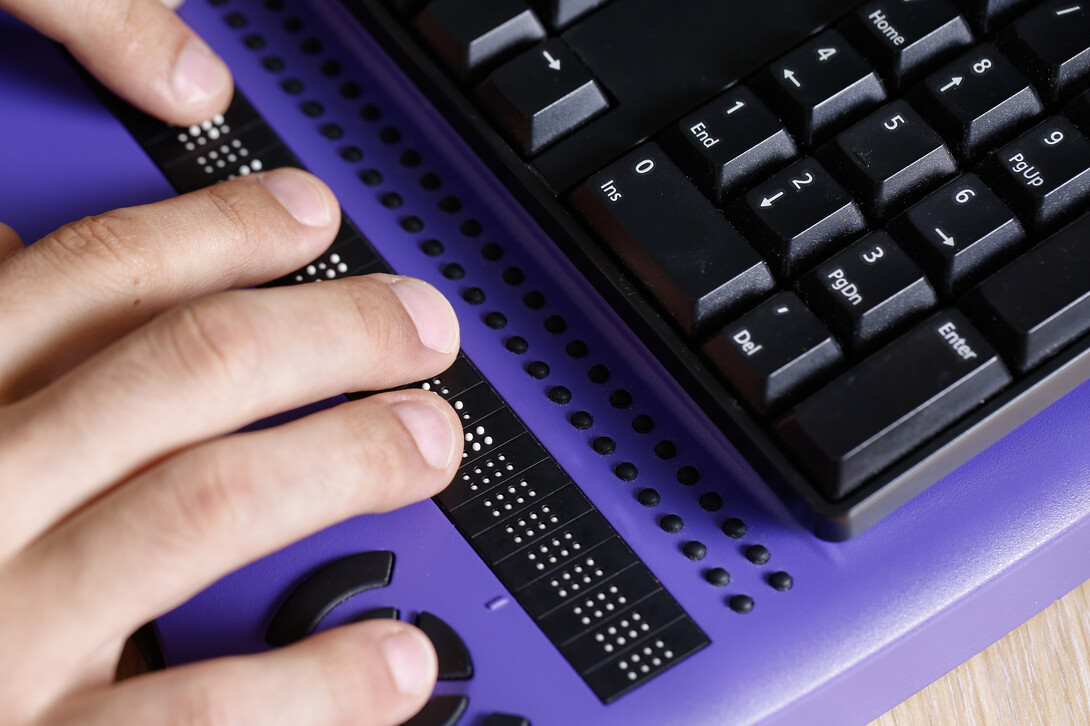
Instructional designers at the University of Nebraska–Lincoln’s Center for Transformative Teaching want to make accessibility more accessible.
The instructional designers are working with faculty and staff to build digital course materials that offer features students with disabilities need, while also benefiting all students. The team creates and develops curriculum and course material to help people teach and learn effectively. Through resources like new training available through Bridge, they hope that by encouraging faculty to consider accessibility as they are developing material, they are more prepared to address all student needs.
“We can help this whole group of students be much more successful if we just make courses more accessible to them and work to fit their needs,” said Ash Mitchell, an instructional designer who worked on the project. “If instructors are thinking about accessibility upfront as they are designing courses, then there aren’t as many students falling through the cracks. Additionally, it benefits instructors because when they do have a student with accommodations in their class then they do not need scramble to do that last minute. Their course materials are already designed where they work for those students.”
Instructional designers with the Center for Transformative Teaching collaborated on the Bridge training with staff in the Services for Students with Disabilities, University Libraries, Institutional Equity and Compliance and Information Technology Services. More than 25% of faculty in all undergraduate colleges have completed the Bridge training since it became widely available during the fall 2023 semester.
“Instructors are leaving the training more confident about how to implement those strategies,” said Julia Remsik Larsen, another instructional designer who worked on the project.
The team is also conducting a research study using data about how instructors apply the training and how it impacts students in the classroom.
The training originated as a Canvas resource, but Remsik Larsen said they wanted to take it one step further and walk people through all of their options.
Instructors can make their course material more accessible through things like captions on videos for students who are hard of hearing, or using the styles function in programs like Microsoft Word or alternative text on images for those who use screen readers.
“It’s sometimes as simple as using the accessibility checker in particular software,” Remsik Larsen said. “It’s just making a habit of knowing what to look for and knowing what the most common accessibility supports are.”
The features might be designed for people with disabilities, Remsik Larsen said, but those features can also help other students. Maybe a student does not have a reliable internet connection, so they can still use alternative text to “see” an image in a document or on a site even if the image is not loading. A student might be trying to watch a video in a loud space but could still get the information by reading captions. The resources could also improve the learning experience for people with learning disabilities that have not been diagnosed.
Many of the concepts focusing on digital accessibility fall under the framework of Universal Design for Learning. The principles of Universal Design for Learning give students options for how they engage with the content and how they demonstrate what they have learned.
Accessibility opens up choices for how the information is represented. Using only a textbook, for example, might not be optimal for a student who does their best with audio processing and would benefit from an audiobook option. Providing multiple means of learning can catch those who might otherwise fall through the cracks.
“There are a lot of students who are not necessarily getting what they need and are struggling academically because of it,” Mitchell said.
Mitchell said sometimes people are intimidated by the task of adapting existing course material, but they want the training to lower barriers to digital accessibility by showing that some of it is relatively easy to implement.
“It can really be overwhelming,” Mitchell said. “We wanted to focus on ways you can do it that don’t take that long and hopefully in the long run will help instructors save time, because they won’t have to revise materials when they receive a student accommodation. It will already be built into their course.”







